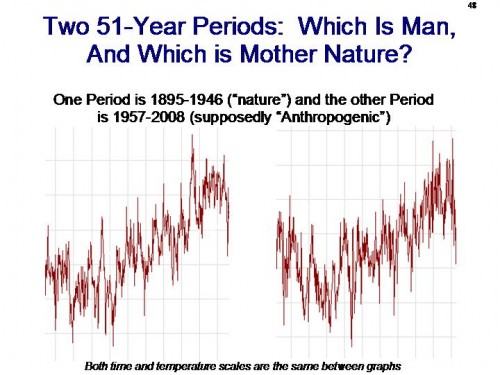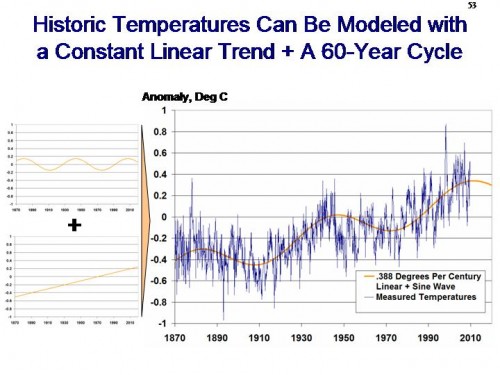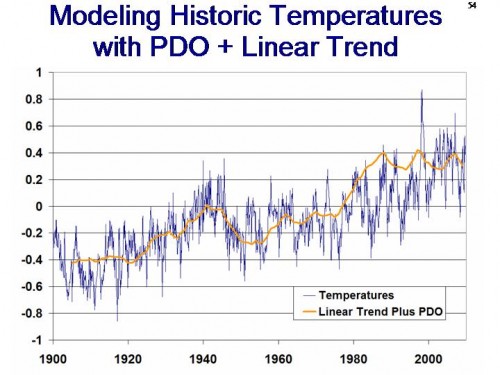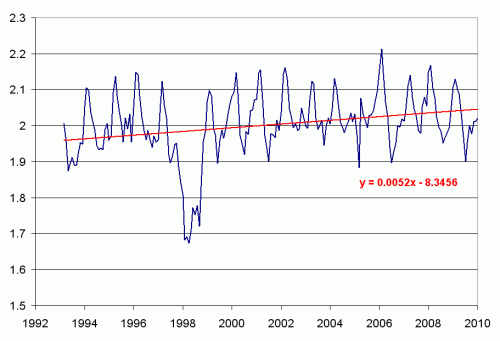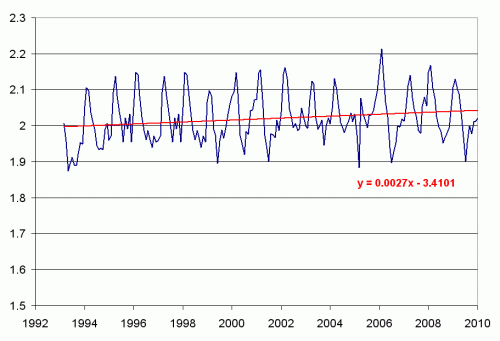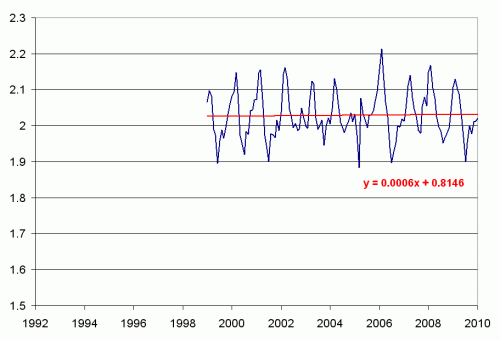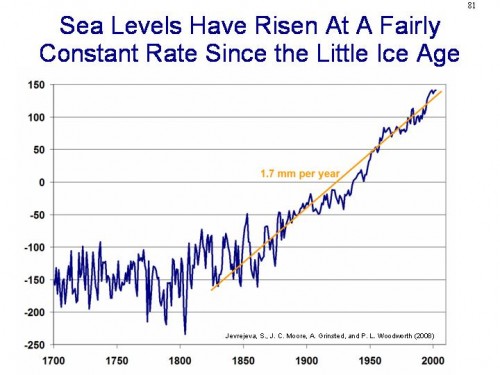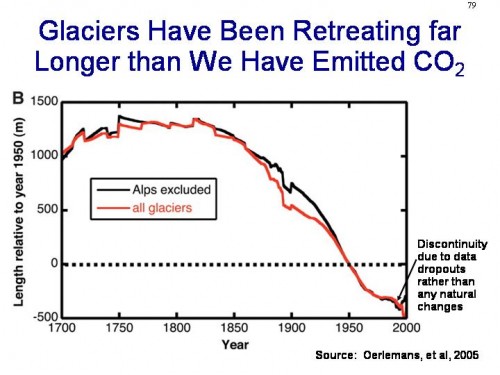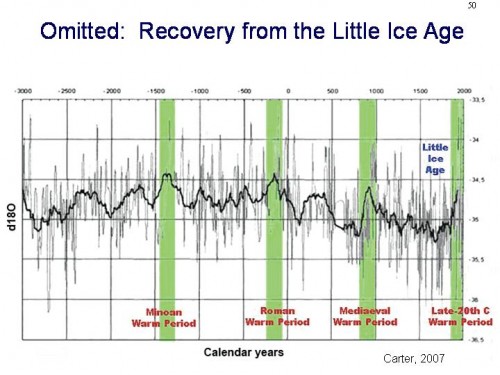I welcome critical reactions to my recent video, which I put together as a layman’s summary of the science of the skeptic’s position (if you have sent me criticisms, I have read them even if I have not gotten back to you — my real life has been crazy lately).
If you have not seen the video, and are a frequent reader of this site, I encourage you to do so. But to understand what follows, I need to share a bit of a summary of the video.
The video begins by accepting that CO2 acts as a greenhouse gas and that increased atmospheric concentrations can cause some incremental warming, on the order of magnitude of 1C per doubling of concentrations. But while I accept that CO2 causes incremental warming, I challenge the notion that there is a high climate sensitivity to CO2, driven by positive feedbacks, that multiply this warming to 3,5, even 10 degrees (thus the title of the video “Catastrophe Denied.”)
So, much of the video looks at alarmist arguments that sensitivity to CO2 is high, or in other words, that CO2 is acting as the main driver of world temperatures, that it is the dominant factor in recent temperature increases and its effect dwarfs all other effects.
In challenging this proposition, I took on 3 arguments:
- That ice core analysis (as shown by Al Gore in his movie) shows that for hundreds of thousands of years, CO2 and temperatures have moved together, demonstrating that CO2 is the main thermostat of the Earth
- That Michael Mann’s hockey stick (as given prominence by both the IPCC AR3 and AR4 as well as Al Gore in his movie, though incorrectly labeled as Dr Thompson’s Thermometer) shows that absent man, Earth’s temperatures were incredibly flat and stable and that only the introduction of manmade CO2 recently upset this stability
- That climate models are unable to replicate recent warming (ie in the last 50 years) using only natural forcings and only the introduction of CO2 into the models allows them to replicate history correctly
I am not going to deal with these arguments here (go watch the movie!) but several comments I have received are all of a single theme. Basically, the comments state that neither numbers 1 or 2 above are arguments any climate scientists are using and, further, just to demonstrate what a silly straw-man-erector I am, they were never used as proof of high climate sensitivity to CO2. This former may or may not be true, but the latter is just BS, and it represents a typical alarmist tactic. Make an argument, defend it like a mother bear (arguing skeptics are bad people for even questioning such obvious and settled science), and then when the argument finally gets shot down in flames, claim that it doesn’t matter and that it was never a serious argument anyway. The virtue of this tactic is not only that it can help paint skeptics as raising straw men, but it can also hide the fact that the science is so week that supporters must lurch from justification to justification, from thin limb to thin limb, trying to find a new branch of the tree to support them before the old branch breaks.
One commenter insisted to me, for example, that the ice core analysis from Al Gore’s movie was never meant to show a direct cause and effect relationship between CO2 and warming but to show proof of CO2 positive feedback (ie higher temps cause more CO2 to be driven out of the oceans which increases its concentration in the atmosphere which causes more warming). I have no doubt that is how it is used today, but it is just Stalinist revisionism to claim that this was Gore’s argument in the movie.
Steve McIntyre had an interesting example of this approach in a recent post (actually, Steve could write a book on the defend-defend-defend-defend-It doesn’t matter style of debate). For years, in response to questions about siting issues and uncorrected biases in the surface temperature record, James Hansen has claimed that the GISS has solved all that by using computer algorithms that compared sites to other nearby sites and used sophisticated statistical approaches (way beyond the ability of mere skeptics to understand) that corrected out all these biases. Some of us Luddites continued to argue that they weren’t correcting the biases in this homogenization approach, but were merely spreading the error around multiple stations like peanut butter (Anthony Watt has a lot more in his new book).
But then we find this from the FOI’e emails from the GISS:
The next morning (Aug 7), Ruedy sent Hansen and Gavin a draft reply to my email. He reported a US error of 0.15 deg C (a bit lower than my estimate the previous night.) The draft reply satirized the idea (then being promulgated by Rabett and Tamino) that GISS software could “fix” defects in surface data:
I had no idea what code you are referring to until I learned from your article “Hansen’s Y2K Error (which should really be Reto’s Y2K error) that GISS is in possession of some magical software that is able to “fix” the defects in surface data. No wonder you would like to get your hands on that – so would I. Unfortunately your source totally misled you in that respect. I’m a little amazed that you uncritically present it as a fact given that a large part of your web site is devoted to convincingly prove that such software cannot possibly exist.
And there is the technique in a nutshell, don’t just abandon the analysis when challenged, but deny it ever existed, and paint the challenger as somehow defective in his approach by “uncritically” suggesting such a straw man

